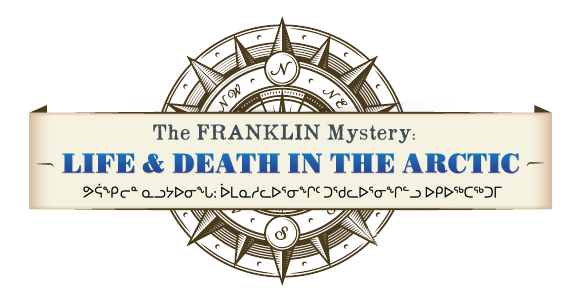Schwatka visits Netchillik village, interviews Seeuteetuar, Toolooah, Ooping [as reported by Gilder] (1881)
The day we left Montreal Island two seals were killed, which were the first since leaving Hudson's Bay. We found the distance from the north-east end of the island much less than mapped, and went into camp well up the coast, after killing three reindeer. We again took the land, crossing the Oyle Point and Richardson Point peninsulas, which we found much wider than mapped. In an inlet west of Richardson Point, or "Nu-oo-tar-ro," as it is known by the natives, we ran into the first of the Netchillik encampments, on the last day of May. The ceremony of opening communication was similar to that with the Ooquee-sik-silliks a few days before, with the exception that instead of remaining in their igloos the men were drawn up in line of battle in front of them, and sent out an old woman to find out who we were and what we wanted. If our designs had been hostile, and we had killed the old woman, their fighting strength would not have been reduced, and it would only have been one less old woman to care for. They carried their bows in their hands, with arrows fixed to the strings ; but when the old woman shouted back that we were white men, they laid aside their arms and received us in a friendly manner, striking their breasts and saying, "Many-tu-me," though Joe afterward told me that one of the men wanted a fight anyhow. They have a custom of killing the first stranger who comes among them after a death in the tribe, and as we filled that requirement, it seems he wanted to carry out the custom. At Equeesik's suggestion a gun had been discharged in the air as we approached, and it is probable that the knowledge that we were better armed than they had some effect in securing peace. They acted in quite a friendly manner after we came among them, and Lieutenant Schwatka and I visited all their igloos, leaving needles, thimbles, spoons, knives, and fish-hooks with them in exchange for a few unimportant Franklin relics. The next day we interviewed an old man named Seeuteetuar, who had seen a number of skeletons near the water line in an inlet about three or four miles west from the present camp. He had also seen books and papers scattered, around among the rocks along the shore and back from the beach. There were also knives, forks and spoons, dishes and cans. There was no sled there, but there was a boat, which was afterward broken up and taken away by the natives, with which to manufacture wooden implements. He was shown a watch, and said he saw several like it lying around, which were also taken and broken up by the children. Some were silver and some gold. He said the bones were still there, unless carried off by foxes and wolves. He had never seen or heard of a cairn erected by white men along the coast on this side of Simpson Strait, and had never heard of any other traces of white men here. It was a long time since he had been there, but he could show us the spot.
Toolooah, another Netchillik, about forty-five years old, had also been at the boat place, but after nearly everything had been removed. He had, however, seen traces of white men in the Ookjoolik country, on the western coast of Adelaide Peninsula, and as late as last summer had picked up pieces of bottles, iron, wood and tin cans on an island off Grant Point. Ookjoolik natives had pointed out this island as a place near which a ship had been sunk many years ago. A map was shown to him, and he pointed to a spot about eight miles due west of Grant Point as the place where the ship went down. Ooping, an Ookjoolik Inuit, who lived near the mouth of a big inlet that extends nearly across Adelaide Peninsula, from the head of Wilmot Bay, was the last Esquimau who had gone over the west coast of King William Land. This was two years ago. He had seen traces of white men near Cape Jane Franklin and along the coast of Cape Felix. This inlet, spoken of by Toolooah, seemed of sufficient importance to deserve surveying, and Lieutenant Schwatka decided to include it in the search of the Ookjoolik country.





